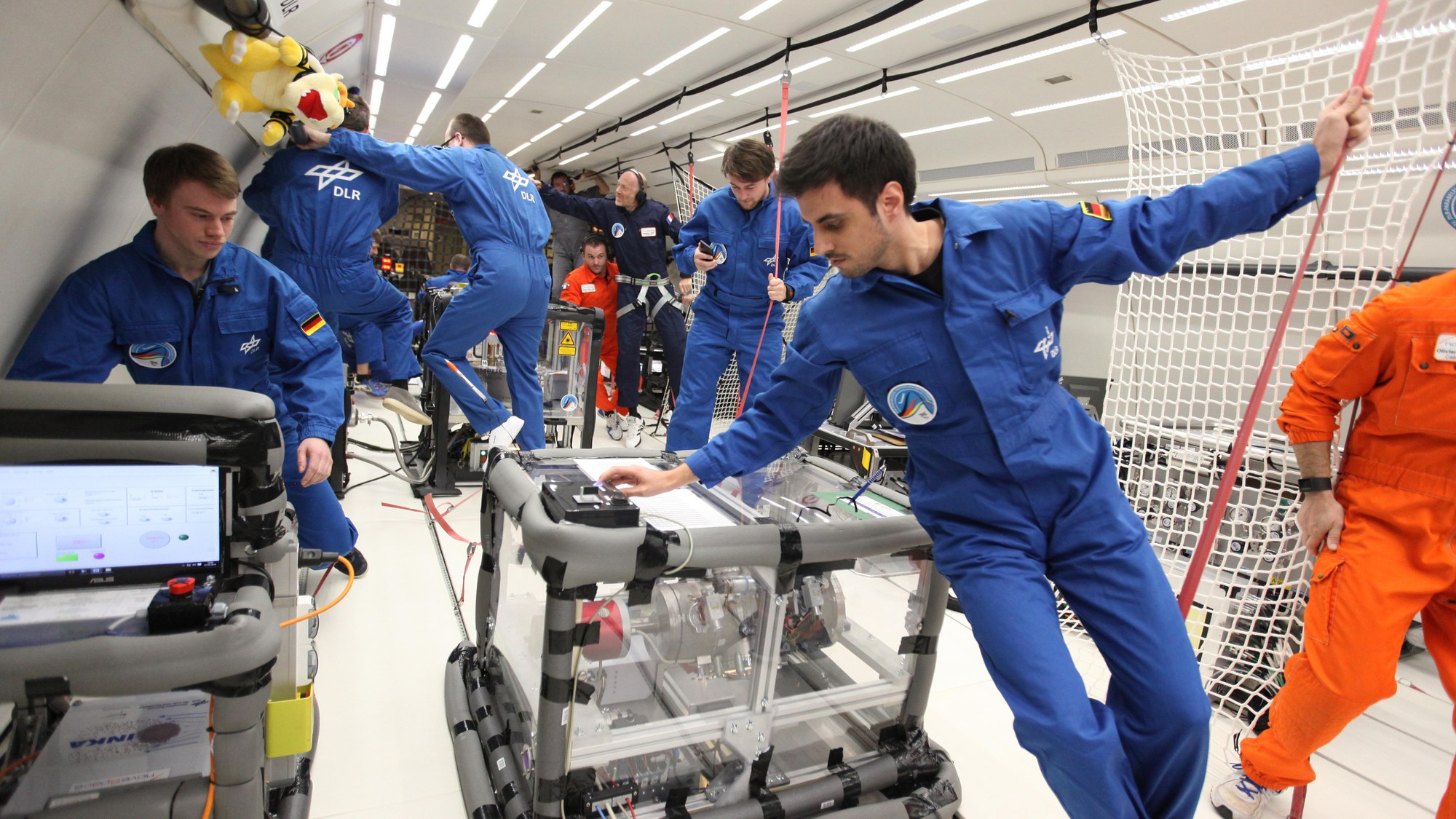The INKA experiment
The INKA experiment
How are stars born? Scientists from the Faculty of Physics at the University of Duisburg-Essen addressed this question with their INKA (unstable protoplanetary bodies in a low-pressure wind tunnel) experiment (front centre of image) during the 31st DLR parabolic flight campaign. On Earth, sand dunes migrate when the wind removes particles from one side, which are then deposited by gravity on the downwind side. Indeed, what would happen without gravity? The dunes would simply break up in a cloud of sand grains. Similar situations are conceivable during the formation of planets, in which loosely linked particles the size of sand grains form a body a kilometre or so in size with very little gravity of its own – a planetesimal. To discover the conditions under which such bodies are stable, scientists observed a sample made of particles one millimetre in diameter in a low-pressure wind tunnel, in which the pressure and wind speed could be varied. The wind tunnel was simultaneously on a centrifuge, in order to simulate different levels of planetesimal gravity (planetesimal size).

